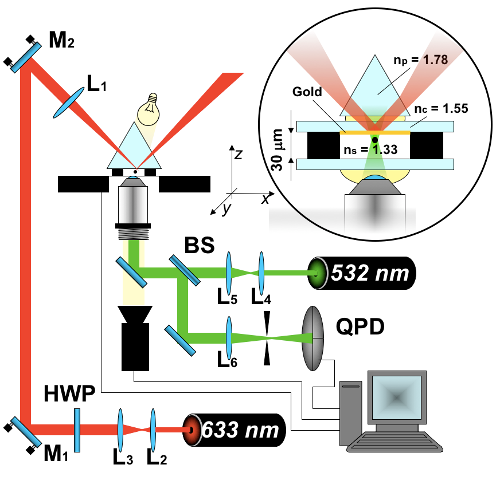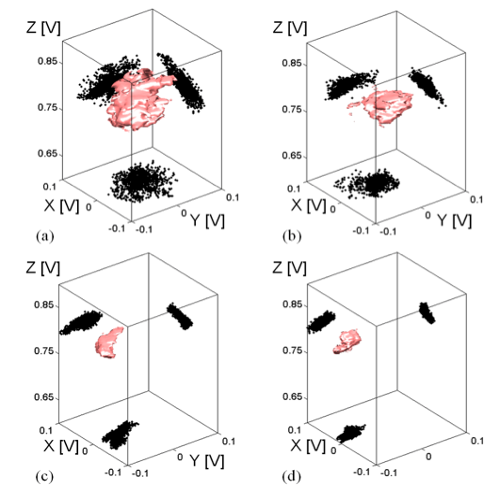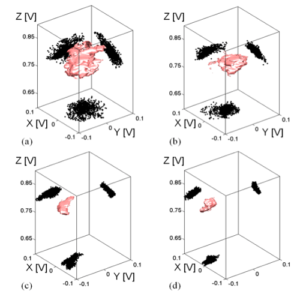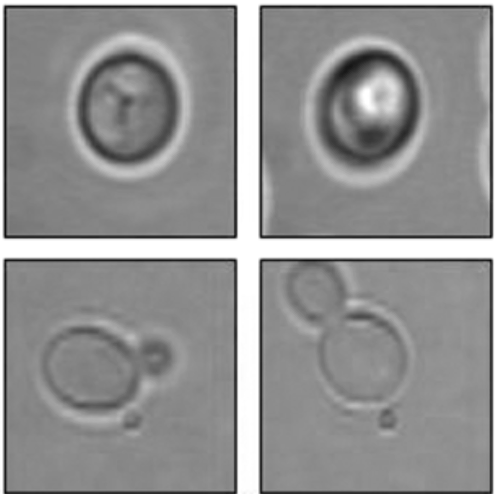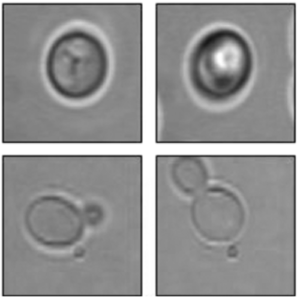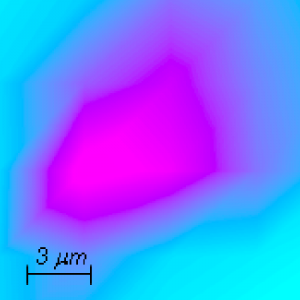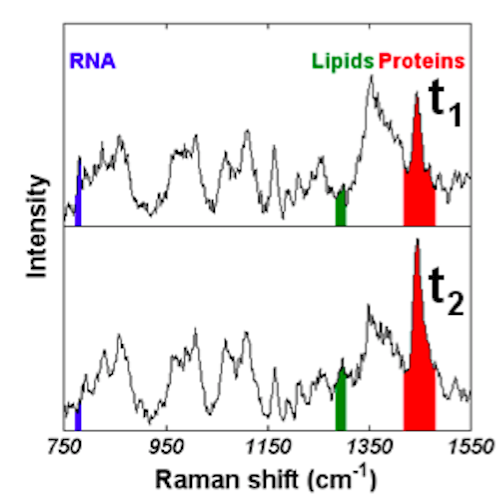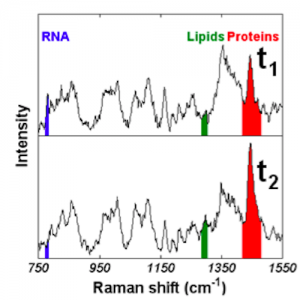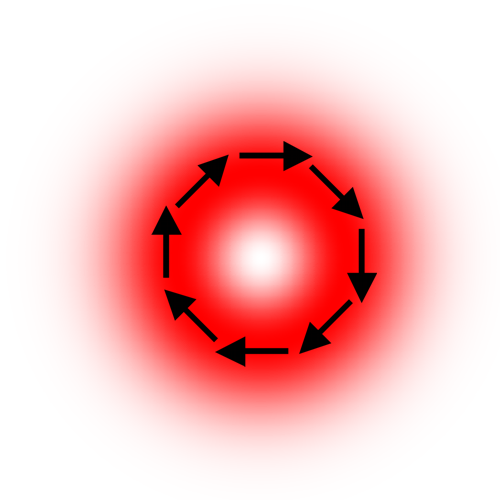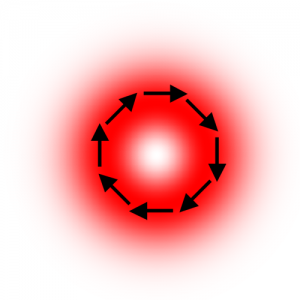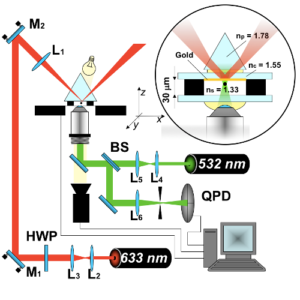
Surface plasmon radiation forces
Giovanni Volpe, Romain Quidant, Gonçal Badenes & Dmitri Petrov
Physical Review Letters 96(23), 238101 (2006)
DOI: 10.1103/PhysRevLett.96.238101
We report the first experimental observation of momentum transfer from a surface plasmon to a single dielectric sphere. Using a photonic force microscope, we measure the plasmon radiation forces on different polystyrene beads as a function of their distance from the metal surface. We show that the force magnitude at resonance is strongly enhanced compared to a nonresonant illumination. Measurements performed as a function of the probe particle size indicate that optical manipulation by plasmon fields has a strong potential for optical sorting.
